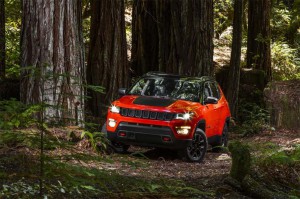
Jeep sales had been reliably strong for FCA during the past few years; however, they fell 7% in October.
The tempo of new vehicle sales slowed during October as every major automaker reported a drop during October.
Ford Motor Co., which also was expected to report a drop in sales, delayed the release of its October sales due to a fire in an electrical substation in the company’s headquarters in Dearborn, Michigan. The fire, which happened yesterday, caused the evacuation and closure of the building.
The big surprise was a 10% drop in sales by FCA, which had posted a long string of sales increases, stretching back more than five years until it had to re-state its sales figures this summer under pressure from lawsuits by dealers and Securities and Exchange Commission.
Sales of Jeep-brand vehicles dropped 7% after posting gains for much of the year. But with sales of the new Chrysler Pacifica failing to meet sales expectations and sales of the Chrysler 200, which FCA will stop building at year’s end, dropping dramatically, Chrysler-brand sales dropped by 45% last month.
Sales by Dodge and the sputtering Fiat brand also dropped by double digits.
Nissan, which has steadily improved sales since the end of the recession, also reported a 2.2% drop in sales although its luxury brand, Infiniti, reports its sales improved .6%. Honda sales fell 4.5% last month, although its truck sales were up 1.1%. Toyota reported its monthly sales were down 8.7%, including Lexus sales off 6.2%.
(Falling used car sales may provide good value, but suspect safety. To see the story, Click Here.)
“Light trucks remained the hottest segment for the industry in October,” said Bill Fay, group vice president and general manager of the Toyota Division. “With best-ever October Highlander sales, combined with solid RAV4, Corolla, and Camry results, we expect to keep Toyota the number one retail brand.”
Despite the introduction of its new Alltrack crossover and aggressive marketing efforts, Volkswagen sales were off by 18.5% as it continued to struggle with the aftermath of the emission-cheating scandal.
General Motors also reported a 1.7% drop in sales, but again noted that it had gained market share at the retail level.
“GM’s October performance reflects the strength of our retail business and our operating discipline,” said Kurt McNeil, GM’s vice president of U.S. sales operations.
“We gained profitable retail share in October while spending less than the industry average on incentives and commanding the industry’s best average transaction prices for any full-line automaker. We will continue our disciplined approach and focus on retail in a strong industry.”
(To see more about the expected October sales slump, Click Here.)
In October, GM’s incentive spending as a percent of ATP was 11.7%, below the industry average of 11.8%. GM’s ATPs, which reflect retail transaction prices after sales incentives, were $36,155 in October, more than $4,650 above the industry average and more than $1,000 above last October’s performance.
GM also expressed confidence that overall sales of new vehicles will remain strong in the months to come.
“Key fundamentals like job security, rising personal incomes, low fuel prices and low interest rates continue to provide the environment for a very healthy U.S. auto industry,” said Mustafa Mohatarem, GM’s chief economist. “The U.S. auto industry is well positioned for sales to continue at or near record levels for the foreseeable future,” he added.
Analysts, however, raised some caution flags. Kelley Blue Book said the estimated average transaction price for light vehicles in the United States was $34,663 in October 2016 and new car have increased by $783 (up 2.3%) from October 2015, while remaining flat from last month.
“Transaction prices continue their upward trajectory in October, rising nearly $800 year-over-year to $34,663,” said Tim Fleming, analyst for Kelley Blue Book. “The Detroit automakers posted gains between 4 and 6% as their strong portfolios of trucks and SUVs align extremely well with current consumer demand.
(AutoNation embarks on major brand expansion. Click Here for details.)
“Despite the increases in transaction prices, incentive spending across the industry continues to climb as well, offsetting much of the transaction price gains. With industry sales reaching a potential plateau, automakers should adjust production to better match demand, which should reduce the need for such high,” Fleming added.

